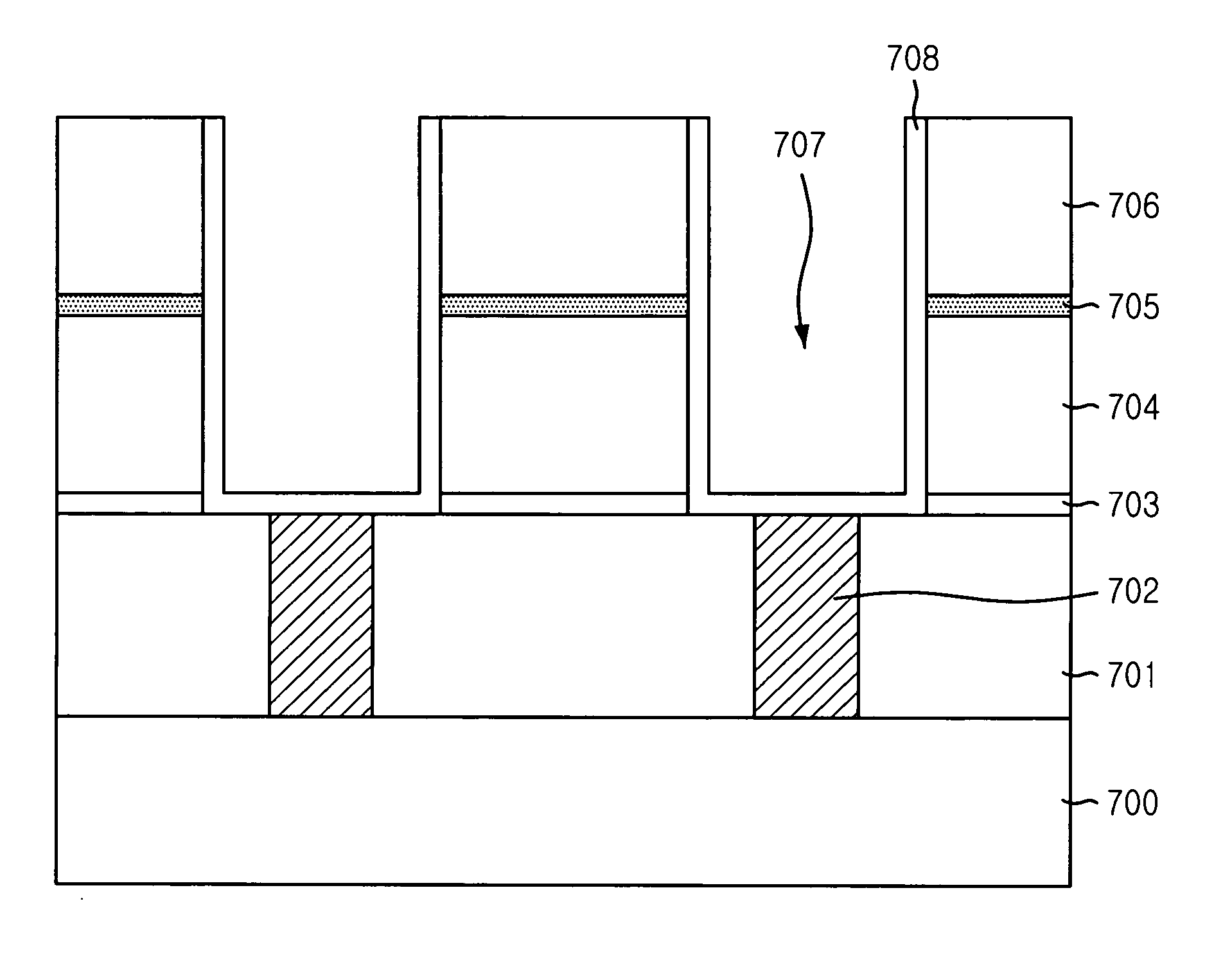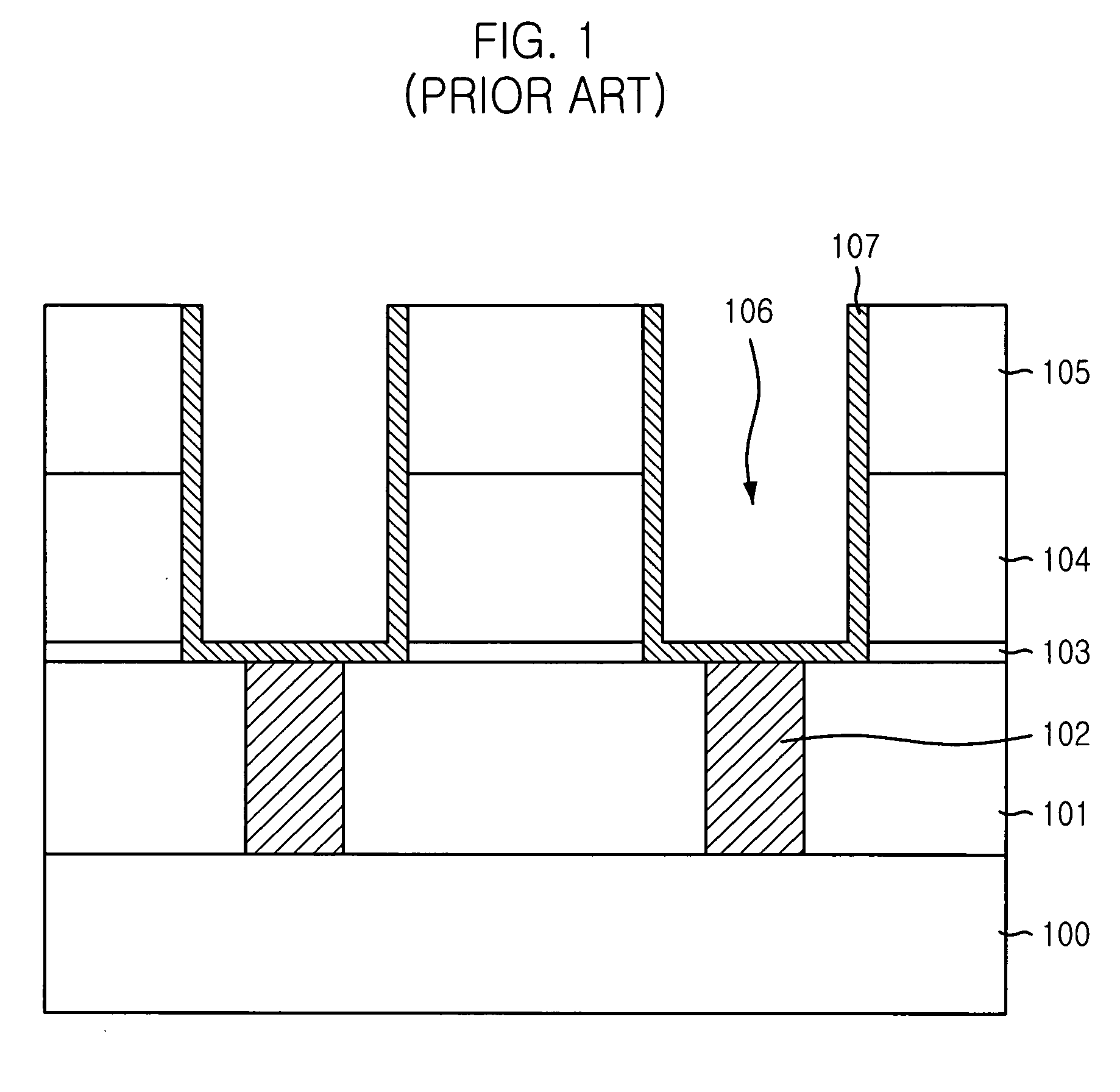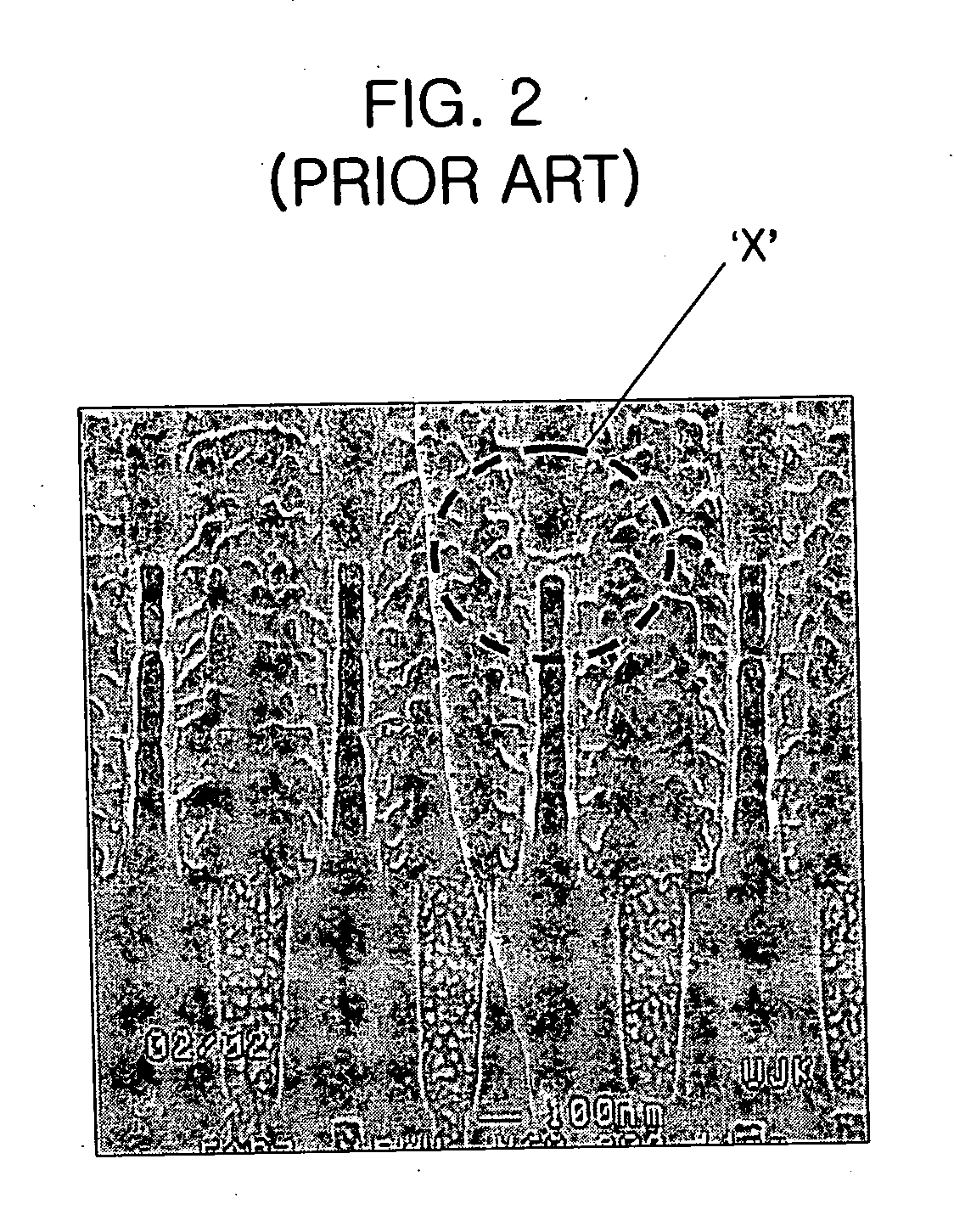Method for fabricating semiconductor device
a semiconductor and device technology, applied in the direction of semiconductor devices, capacitors, electrical equipment, etc., can solve the problems of difficult to obtain the critical dimension (cd) at the bottom portion of the opening, the psg layer 104/b> is more easily damaged, and the capacitor oxide structure is created. , to achieve the effect of preventing bridge formation and reducing the density of the psg layer
- Summary
- Abstract
- Description
- Claims
- Application Information
AI Technical Summary
Benefits of technology
Problems solved by technology
Method used
Image
Examples
first embodiment
[0048]FIG. 6 is a flowchart for showing sequential steps of a method for fabricating a semiconductor device in accordance with the present invention.
[0049] As shown in the flowchart, at step S601, a phosphosilicate glass (PSG) layer is formed on a substrate provided with various device elements. Herein, the substrate includes conductive regions which can be gate electrodes, bit lines, metal wires, contact plugs, and contact pads.
[0050] At step S602, a capping layer for preventing an incidence of phosphorus diffusion from the PSG layer to a subsequent tetraethylorthosilicate (TEOS) layer caused by a difference in a phosphorus concentration gradient between the PSG layer and the TEOS layer. At this time, a thickness of the capping layer is approximately 1 / 19 to approximately 1 / 9 of that of the PSG layer. That is, the capping layer has a thickness ranging from approximately 100 Å to approximately 500 Å. Also, the capping layer is made of a material selected from a group consisting of ...
second embodiment
[0074]FIG. 8 is a flowchart showing sequential steps of a method for fabricating a semiconductor device in accordance with the present invention.
[0075] At step S801, a PSG layer is formed on a substrate provided with various device elements. Herein, the substrate includes conductive regions which can be gate electrodes, bit lines, metal wires, contact plugs, and contact pads.
[0076] At step S802, a surface of the PSG layer is scrubbed in order to make the PSG layer exhibiting hydrophobicity when a subsequent process is delayed by more than a predetermined period, e.g., approximately 5 hours, hydrophilic. The scrubbing proceeds by employing a rinsing process with use of pure water for approximately 40 seconds to approximately 80 seconds. It is also possible to perform the rinsing process in vibration by using pure water for approximately 10 seconds to approximately 30 seconds.
[0077] Meanwhile, since the PSG layer is doped with a high concentration of phosphorus, the surface of the P...
third embodiment
[0122] In accordance with the present invention, adhesiveness between the PSG layer and the TEOS layer can be improved by forming the TEOS layer on the stabilized PSG layer obtained through the application of the plasma treatment. As a result of this improved adhesiveness, it is possible to prevent damages to the interface between the PSG layer and the TEOS layer during the wet cleaning process for removing the etch remnants and the interfacial oxide layer at each bottom surface of the openings.
[0123] In accordance with the first to the third embodiments of the present invention, for the case of the tunnel formation during the wet cleaning process because of a decrease in the density of the PSG layer as phosphorus contained in the PSG layer diffuses from the PSG layer to the TEOS layer and because of a degraded interface characteristic between the PSG layer and the TEOS layer caused by the diffused phosphorus reacting with moisture of the atmosphere, the capping layer is formed on t...
PUM
 Login to View More
Login to View More Abstract
Description
Claims
Application Information
 Login to View More
Login to View More - R&D
- Intellectual Property
- Life Sciences
- Materials
- Tech Scout
- Unparalleled Data Quality
- Higher Quality Content
- 60% Fewer Hallucinations
Browse by: Latest US Patents, China's latest patents, Technical Efficacy Thesaurus, Application Domain, Technology Topic, Popular Technical Reports.
© 2025 PatSnap. All rights reserved.Legal|Privacy policy|Modern Slavery Act Transparency Statement|Sitemap|About US| Contact US: help@patsnap.com



